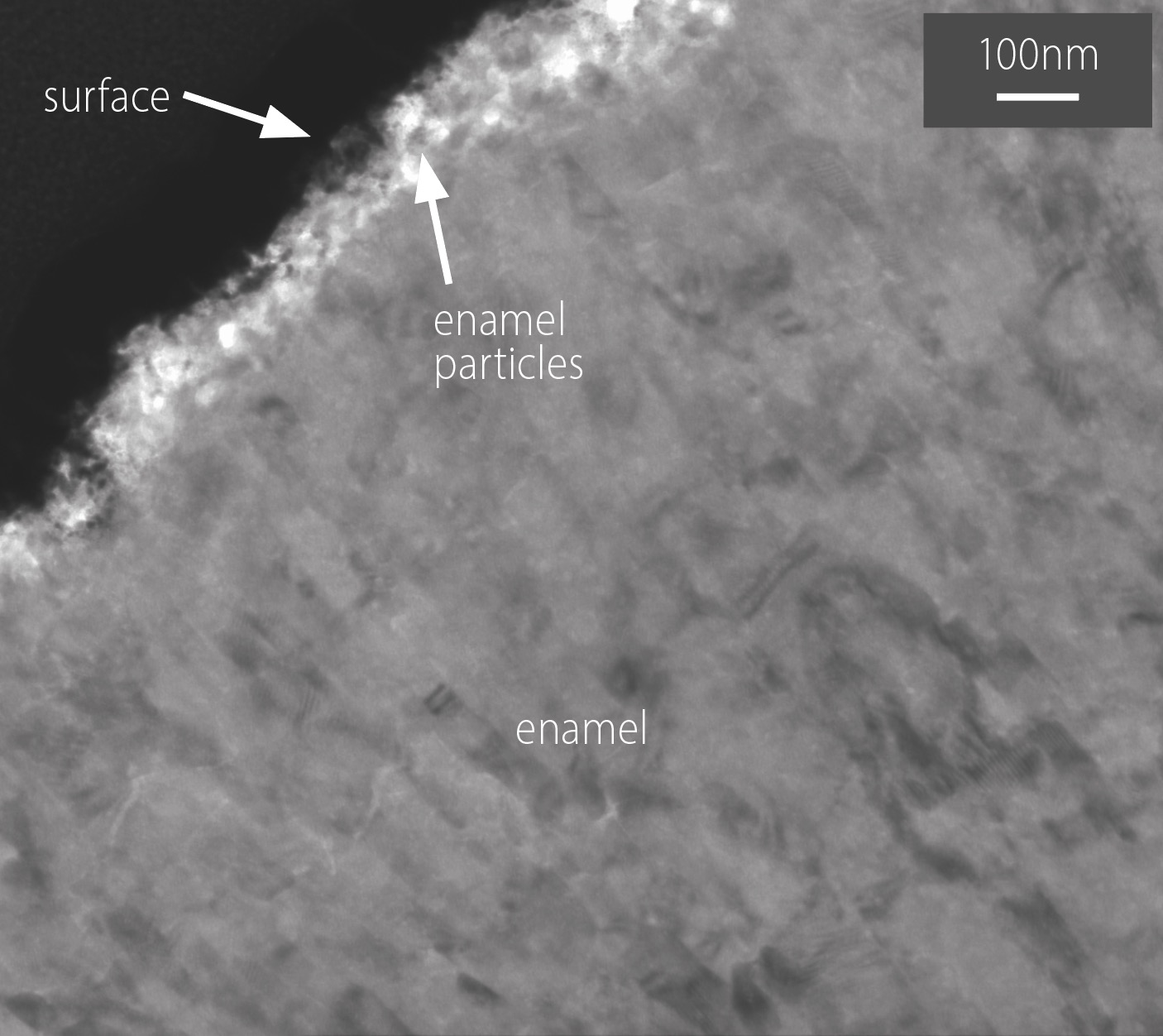Tooth enamel consists of calcium phosphate crystals in the form of hydroxyapatite bound together by a protein matrix. This protein matrix makes enamel tougher than current artificial crown ceramics and the current dental composites used for fillings. Dr Joseph Arsecularatne and Prof. Mark Hoffman at the University of NSW (UNSW) are uncovering the microscopic wear processes in both human enamel and artificial materials. They use focussed ion beam milling, scanning and transmission electron microscopy and energy dispersive spectroscopy in the AMMRF (now Microscopy Australia) at UNSW together with nanoindentation studies to visualise the microstructure of the
materials before and after wear.

TEM image of human enamel after wear showing wear particles (white) adhering to the surface.
The researchers create different oral conditions with saliva and acids to mimic an acidic diet, and apply forces to replicate chewing or grinding of teeth. They show that many factors influence wear behaviour. For example, although saliva remineralises enamel after acid erosion, the repaired enamel is never as tough as undamaged enamel. Also, irregularities in the microstructure act as initiation sites for cracks, which, when increased force is applied, often led to severe subsurface cracking and greater damage to teeth or crowns.
Potentially more wear-resistant crown materials are currently being designed. High entropy alloys that contain combinations of multiple biocompatible metals are now receiving increasing attention for dental applications.
September 21, 2015